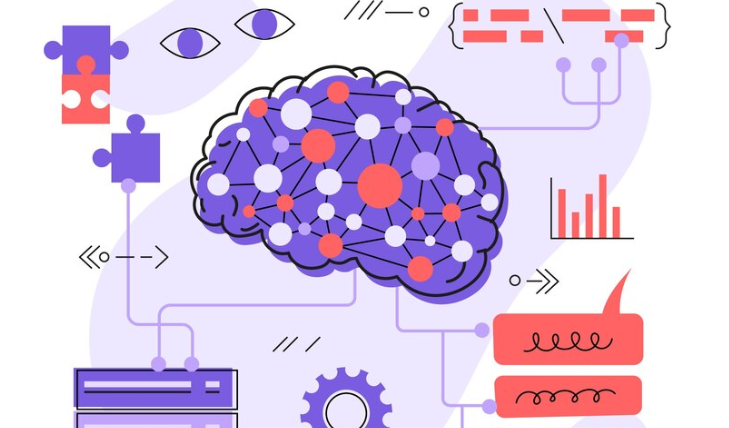In the world of technology, apps are often seen as tools—useful, efficient, and functional. But what if they could go beyond just executing commands? What if they could feel alive, sensing, learning, adapting, and evolving in response to our actions and emotions? The concept of apps that feel “alive” is no longer a distant science fiction fantasy but a growing reality driven by artificial intelligence, machine learning, and ambient computing.
What Does It Mean for an App to “Feel Alive”?
An app that feels alive is one that doesn’t just respond to commands or clicks, but instead reacts, learns, and adapts to its user’s needs in a dynamic, almost organic way. These apps go beyond static designs and routines. They evolve over time, becoming more intuitive, personal, and capable of anticipating needs even before they’re expressed.
In other words, a “living” app isn’t just a set of algorithms working behind the scenes—it feels almost like a digital companion, interacting with users in a way that mimics the natural flow of human behavior.
The Elements That Make Apps “Feel Alive”
1. Learning and Adaptation
The core feature that makes an app feel alive is its ability to learn from interaction. This can involve personalizing content, adapting to changing user preferences, or even responding differently depending on past behavior. Examples include:
- Spotify: Offering increasingly personalized playlists and music recommendations based on past listening habits.
- Google Assistant: Continuously improving its responses and suggestions by learning from previous queries and interactions.
- Apple’s Siri: Becoming more efficient over time, understanding context better, and refining its suggestions based on user behavior.
These apps don’t just perform tasks; they learn from you and provide experiences that seem more human-like the more they are used.
2. Emotional Intelligence
Apps that “feel alive” are starting to incorporate emotional intelligence, making them more responsive not just to logical inputs but to emotional cues as well. Emotion AI, which detects user emotions based on voice tone, facial expressions, or even physiological responses (via wearables), can be integrated into apps to create more empathetic interactions.
For example:
- Replika: A chatbot that evolves based on the emotional input from the user, offering companionship and emotional support.
- Woebot: An AI that uses cognitive-behavioral therapy (CBT) techniques to provide mental health support and adjusts its tone and responses depending on your mood.
When an app understands your emotional state and tailors its responses, it begins to feel more alive—like it’s aware of you.
3. Context-Awareness
Context-aware apps are those that don’t just rely on direct input but also use data from sensors, location, time, and more to respond appropriately. These apps can make decisions based on your current context, making them feel almost intuitive.
For example:
- Smart home apps like Nest or Ecobee learn your daily habits and adjust heating, lighting, and even security settings accordingly.
- Health apps like Fitbit or Apple Health track your activity, sleep, and even stress levels, offering tips that align with your current lifestyle.
These apps don’t just react to commands—they anticipate your needs based on where you are and what you’re doing.
4. Real-Time Adaptation
Some apps can adapt in real-time, continuously refining their behavior based on immediate feedback. Whether it’s a game adjusting its difficulty, a news app offering stories based on your interests, or a shopping app updating product recommendations, real-time adaptation makes apps feel like they are in the moment with you.
For example:
- Netflix offers personalized recommendations that change based on your viewing habits.
- Fitness apps like Strava adjust goals and training routines as you progress.
These apps are dynamic and ever-changing, reacting to what you do and offering a continuously evolving experience.
Examples of Apps That Feel Alive
1. AI-Enhanced Social Media
Social media platforms like Instagram and TikTok are increasingly becoming aware of their users’ behaviors, moods, and preferences. They not only suggest content but sometimes predict the types of posts you might engage with, based on your historical behavior. The more you interact, the more the platform “knows” you, making it feel almost alive in how it adapts to your actions.
2. Gaming Apps with Evolving Worlds
Games are particularly adept at creating the sensation of a “living” world. Games like No Man’s Sky or Animal Crossing have virtual ecosystems that change in real time, responding to player actions and allowing for a dynamic, ever-evolving experience. These apps make users feel like their choices directly impact the environment they are interacting with, adding an element of agency to the experience.
3. Personalized Productivity Tools
Apps like Notion and Trello adapt as users create new projects, templates, and organizational structures. These apps feel more “alive” the more you use them, learning your preferences and offering new ways to optimize your workflow.
The Challenges of Designing “Living” Apps
While the concept of “living” apps is exciting, there are challenges and risks involved:
1. Privacy Concerns
Apps that learn from users require access to personal data. The more an app adapts to your behavior and emotions, the more data it needs to collect. This raises serious privacy and security concerns, especially regarding how that data is stored and used.
2. Ethical Considerations
Emotional AI and context-awareness can create deep relationships between users and their apps, but this raises ethical questions. Should an app manipulate a user’s emotions for profit? How can we ensure that apps with such capabilities are designed in a way that respects user autonomy and emotional well-being?
3. Over-Reliance on Technology
As apps become more alive, there’s a risk that users may become overly dependent on these digital companions, potentially leading to digital addiction or isolation. Designing with balance in mind will be key to ensuring apps enhance, rather than hinder, human connection.
The Future of Apps That Feel Alive
As technology advances, the line between human and machine interactions will continue to blur. The future holds apps that not only learn but also understand, respond, and perhaps even predict user needs in deeply personal ways. These apps will feel less like tools and more like partners, anticipating desires and adapting their behaviors to create more personalized, intuitive experiences.
Ultimately, the most successful “living” apps will be those that enhance our lives without overwhelming them. As we move toward a more emotionally intelligent digital ecosystem, apps that feel alive might just become the companions we never knew we needed.


